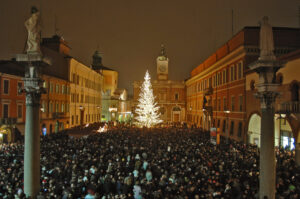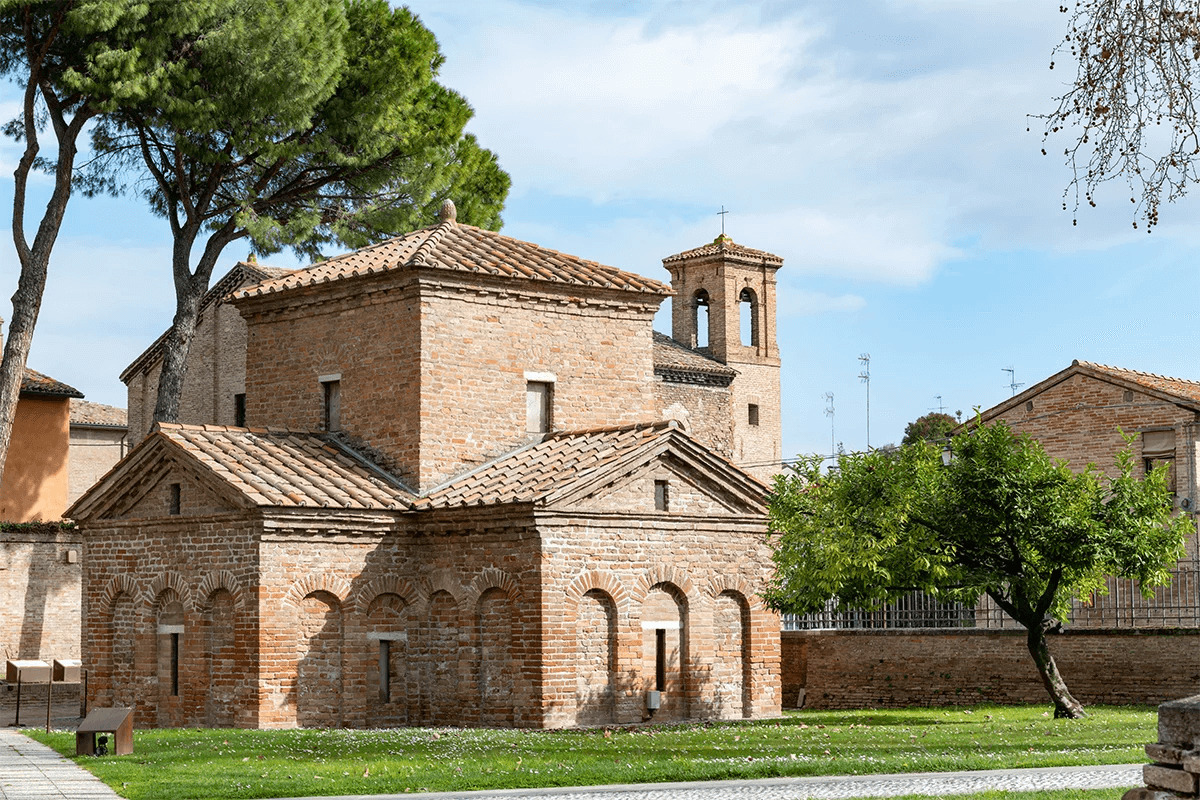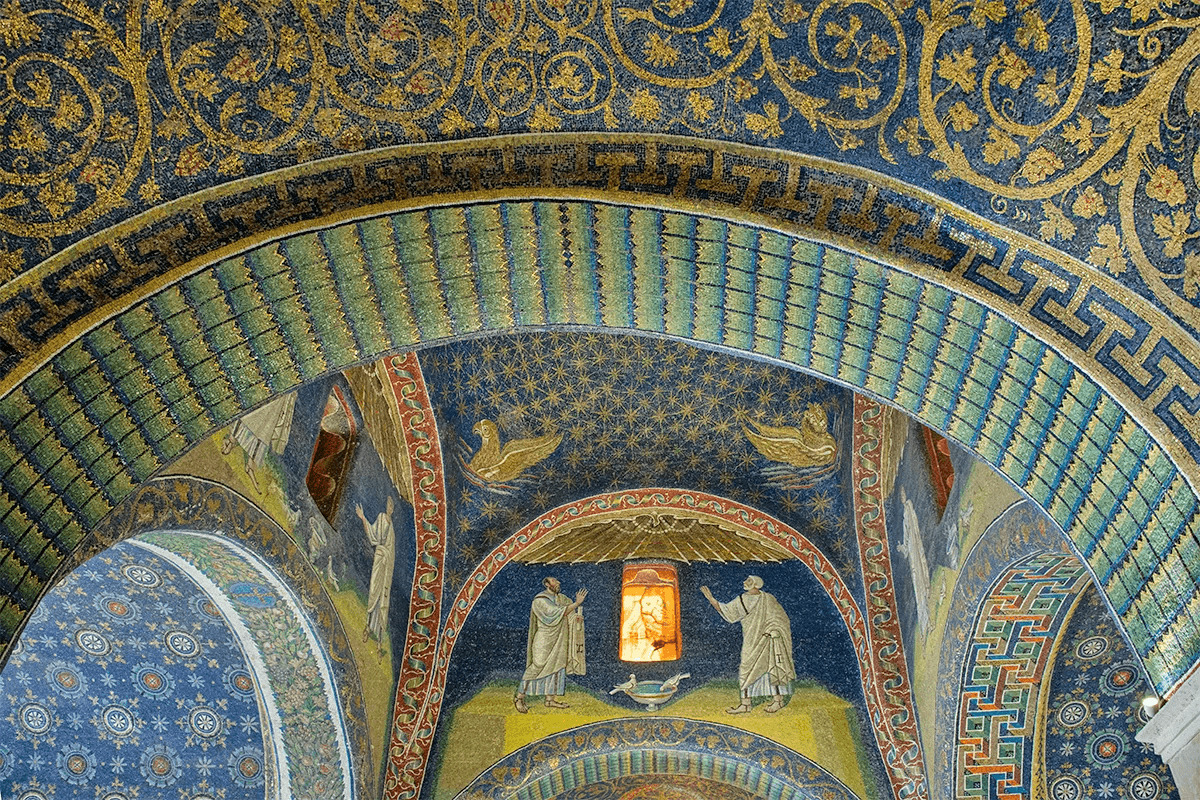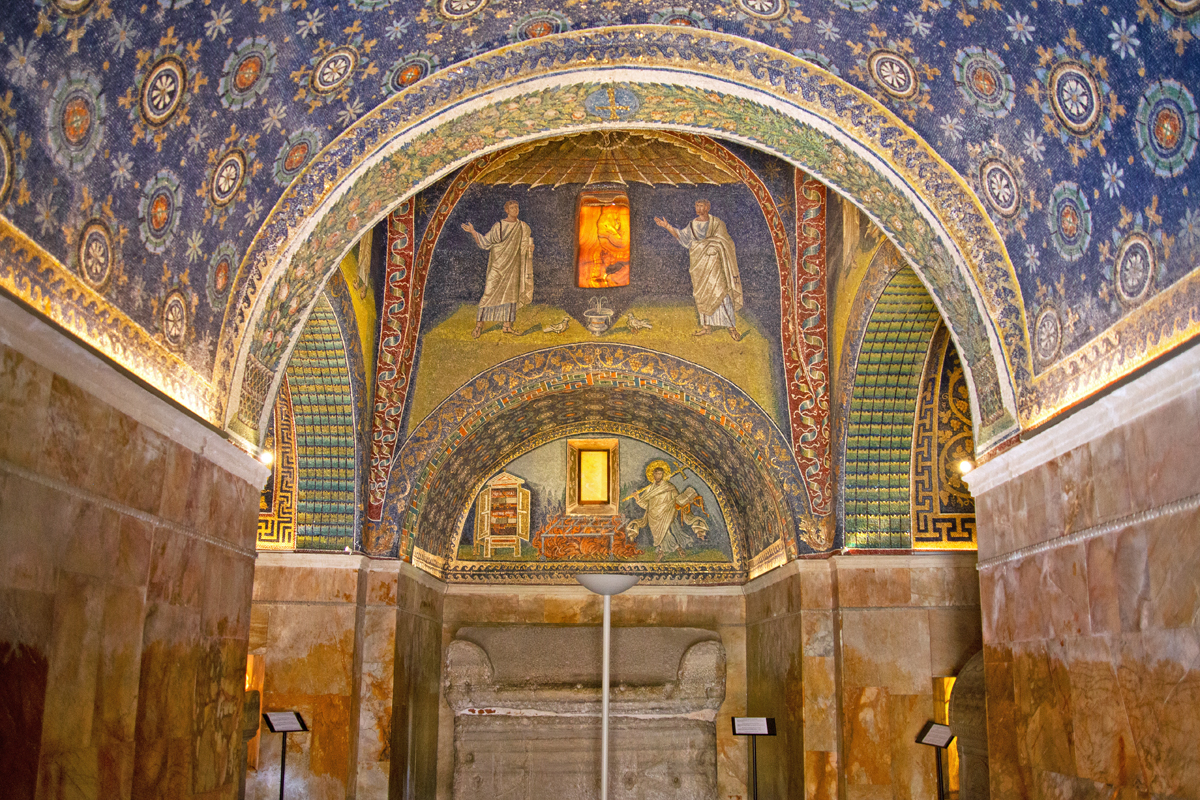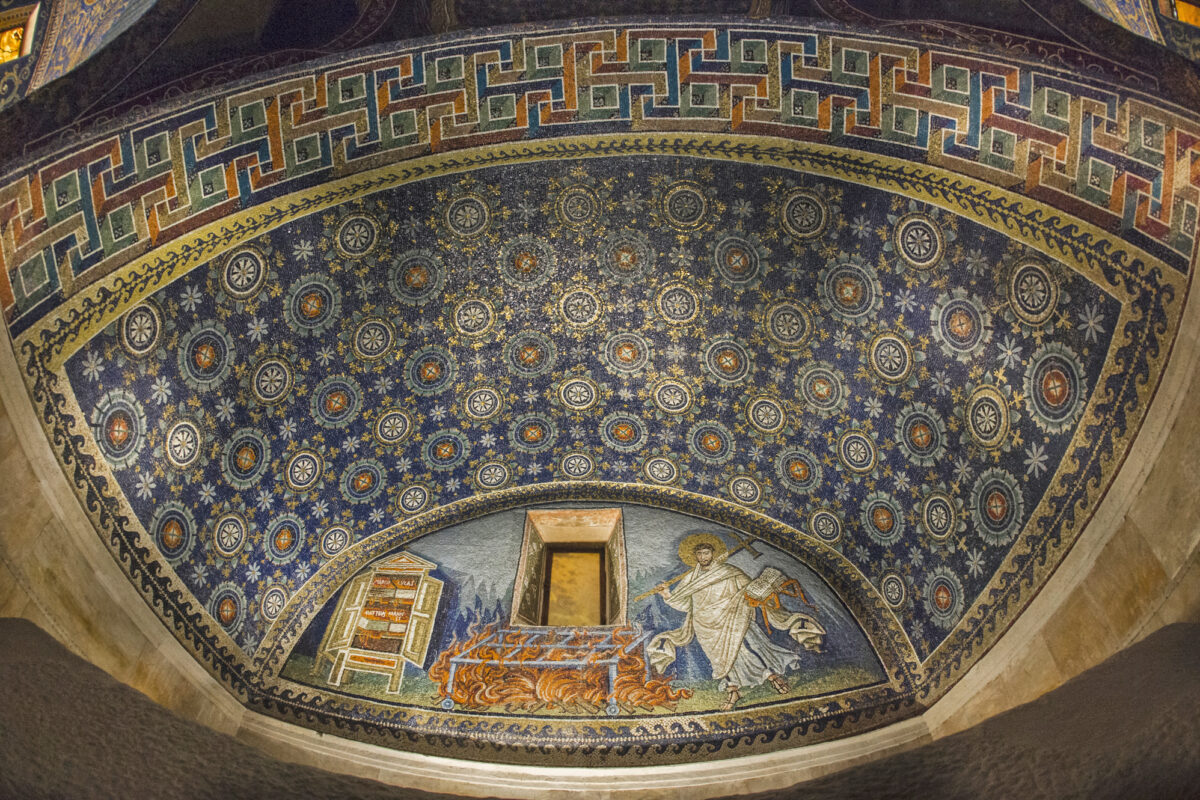Considered as one of the most valuable treasures of the city, the MAUSOLEUM OF GALLA PLACIDIA is one of the oldest buildings in Ravenna and a Unesco World Heritage monument since 1996.
With its simple and humble aspect, it strikes for the peculiar brick face wall, resting under the shadow of a centuries-old plane tree, standing just behind the Basilica of San Vitale.
History and Architecture
The mausoleum was commissioned in the first half of the 5th century AD (after 426 AD) by empress Galla Placidia, daughter of Theodosius and sister of emperor Honorius, as well as reagent on account of her son Valentinian III.
This little building was meant to be her last home; she wanted to be buried here with her brother and second husband, Constance III.
However, the mausoleum never fulfilled that purpose – in 450 AD, the empress died in Rome and was buried there.
If seen from outside, the building seems pretty simple, with a Latin cross plan of little dimensions. The cupola is hidden by a squared-shape tower-lantern at the junction of the cross’ four arms.
Originally, it had to be connected through a narthex with the Church of Santa Croce, which is just behind the mausoleum.
Moreover, it had to be far higher than it is today. As a matter of fact, due to subsidence (i.e. the progressive lowering of the ground that affected most of the ancient buildings in Ravenna), the building islower by about 1.5 metres.
The starred sky of Galla Placidia
As soon as you enter the building, you’re inebriated by its good vibes. The mosaic decorations, enhanced by the golden light that pours through the tiny alabaster windows, create a magical atmosphere.
Yellow marbles cover the whole lower part, whereas the upper part is entirely made of mosaics – walls, arches, lunettes, the dome. Everything is covered in mosaic!
The simple architecture vanishes in a cloud of colours thanks to the little mosaic tiles that fill every centimetre of it, rounding the edges and shaping its lines.
In the balance between the Hellenistic-Roman tradition and the Christian one, the iconography develops on different interpretational grounds themes like victory over death and eternal life.
At the centre of a dome, an immense starred sky stands out in all its splendour. A golden Latin cross, symbolising Christ the rising sun, is surrounded and celebrated by the four Beings of Apocalypse.
The lunettes, however, depict the apostles, framed by doves, gushes of water, symbolising the Grace drawing from the Divine font.
In accordance with this metaphor, in the lunettes to the East and to the West, a few deer drink from the sacred baptismal font, all surrounded by a celestial garden. In the lunette overlooking the entrance, on the other hand, near a gridiron in flames is St. Lawrence.
Over the entrance is the most refined mosaic – Christ the Good Shepherd amidst his sheep.
All around the building, the floral and geometrical decorations that turn the semi-darkness of the room into an ode to the lights are magnificent. The visit to this ethereal place is a prayer to eternal life.
Lastly, the three empty marble sarcophagi fill the three spaces of the cross. One of them is quite simple and dates back to the Roman age (the one in the central arm); the other two are of the Late Christian period (4th-5th century), both decorated with the image of the lamb, one of the oldest symbols for Christ.


